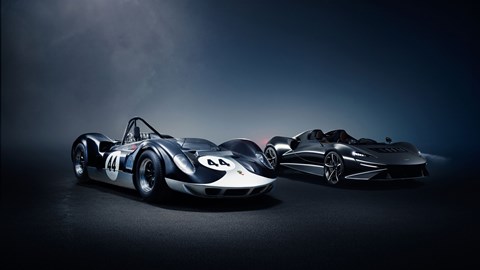► McLaren Elva channels Senna DNA
► Roadster first Teased at Pebble Beach
► Just 399 to be made, £1.4 million each
One of the McLaren Elva’s defining features is its roofless, windowless exterior, but Woking has now begin producing ever so slightly more practical versions of its exotic supercar.
The optional windscreen replaces the Active Air Management System or air cushion we saw on the original car, and means the Elva will meet legal requirements in some states. For other customers, it might just be a matter of preference.
The first examples of the windscreen Elva will be delivered to customers later this year.
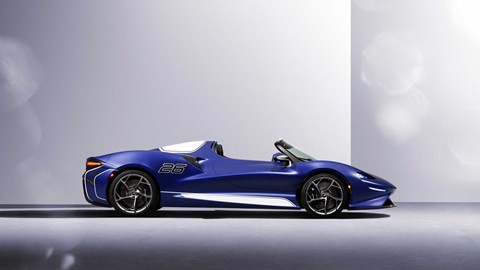
McLaren Elva: what you need to know
Meet the lightest production McLaren ever made, and the first open-cockpit road car from Woking. It’s called the McLaren Elva, and it’s the latest car to slot into the brand’s range-topping Ultimate series range. That’s the same bracket as the Senna and the Speedtail.
As you’d expect from its superhero looks and Ultimate Series tag, Woking’s Ferrari SP1 rival is going to be pretty exclusive: just 399 will be made with a list price of £1,425,000.
However, the Elva isn’t about ultimate performance or silly v-max luxury. This new entry to the Ultimare Series has more power than the Senna, but less downforce – and no windscreen either. Driver engagment is the key here, not outright speed.
‘McLaren continues to push the boundaries of supercar and hypercar development in pursuit of outstanding and unparalleled driving experiences for our customers and the McLaren Elva epitomises that pioneering spirit,’ said McLaren CEO Mike Flewitt. Well, he would, wouldn’t he? ‘It’s fitting that the new McLaren Ultimate Series roadster – a uniquely modern car that delivers the ultimate connection between driver, car and the elements and with that new heights of driving pleasure on road or track – acknowledges our rich heritage with the Elva name.’
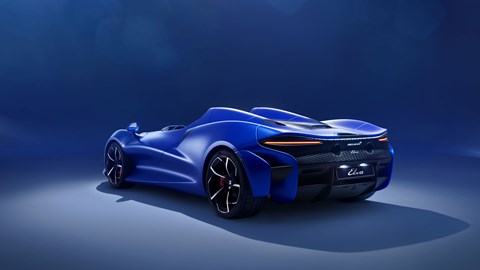
McLaren Elva: it looks good, right?
On the outside, the Elva looks like a mixture of Ferrari SP1 and McLaren’s own 720S. There’s no roof or windscreen (unless you specifically want one) but McLaren claims passengers won’t be blown around by buffeting, either.
Enter McLaren’s new Active Air Management System (they do love a good acronym in Woking, don’t they?). Essentially designed to manhandle air around the cabin, AAMS forces slipstream away from the cockpit between 30-70mph. When engaged a flap is able to stall air while large vents on the bonnet of the car force out another stream of air through a 130-degree radius.
This basically wrestles air around the Elva, and creates a ‘bubble’ when combined with the free-flowing air you get when the car is in motion. McLaren is keen to point out just how good the system was, saying just below motorway speeds it’s possible to hold a conversation.
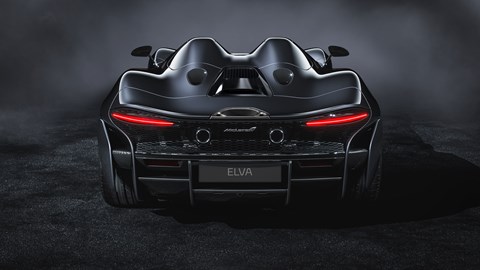
The exhaust is trick too: McLaren engineers called the system ‘Nirvana’ because they believe it’s the best noise you can create from a turbocharged engine. By placing two of the four exhausts apart and facing behind the car, and then the other two close toegether and facing upwards, the Elva is able to produce a full-bodied exhaust note. Think of a perfectly positioned hi-fi speaker system, and you’re pretty much there.
How will it drive?
Very fast. Very visceral, we expect. The Elva will use the familiar 4.0-litre twin-turbocharged V8, good for 0-62mph in under three seconds, and 124mph in just 6.7 seconds – faster than the McLaren Senna, then. Generating around 800bhp, the McLaren motor is mated to a seven-speed twin-clutch gearbox.
Of course, an engine is only half the equation, but a bespoke carbonfibre chassis and body, carbonfibre seats – and a total lack of roof – means the Elva promises to be the lightest, purest McLaren road car made in recent years. Electro-hydraulic steering promises confidence-inducing feedback on turn-in, while 390mm carbon ceramic brakes will get the Elva stopped in the braking zones. Woking’s new car will ride on a linked-hydraulic active suspension.
A full-width active rear spoiler, along with a rear diffuser, will help it stick to the tarmac, and the latter uses ‘fences’ to help maximise efficiency – just like an F1 car.
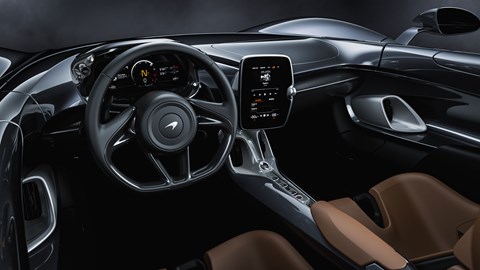
And that Elva name?
What’s up with very, very fast cars having very, very odd names? Unlike Lotus’s Evija however, the Elva’s name hasn’t been plucked out of thin air.
Woking’s latest supercar actually gets its name from a couple of Bruce McLaren-designed race cars in the 1960s.
Called the M1A and McLaren Elva M1A, they were customer versions of the Group 7 McLaren race cars (below). So it’s an authentic badge for a very special car…
